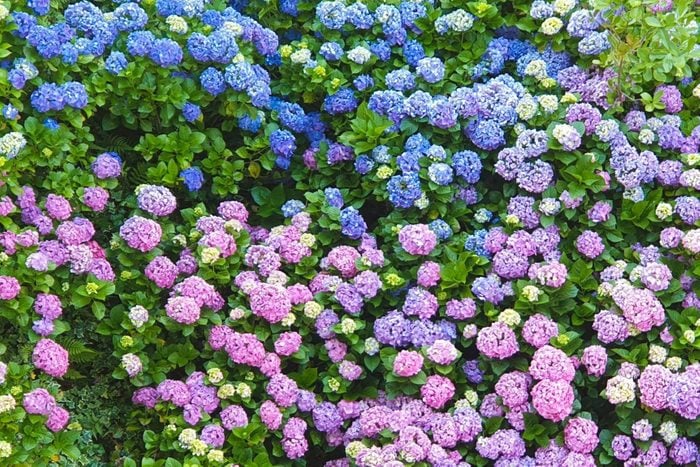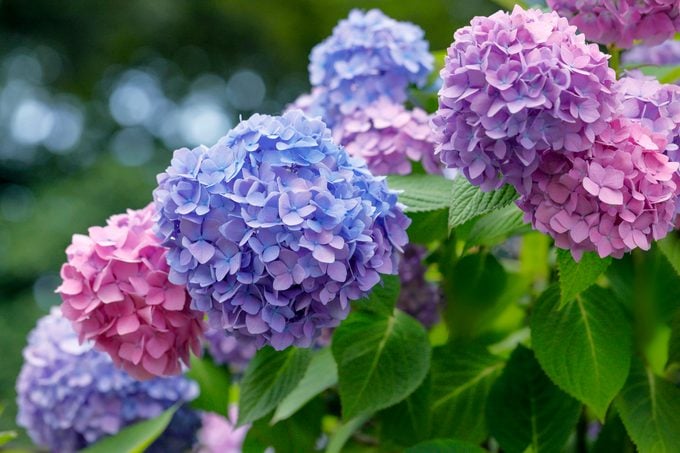What Your Hydrangeas Can Tell You About Your Soil
Updated: Apr. 16, 2024

Hydrangeas are beautiful perennials that come in a variety of hues. But did you know their color can give you insights about your soil?
It’s true: The blossoms of certain varieties of hydrangeas change color based on soil pH, offering valuable insight into soil composition and what’s going on underground. Gardeners can use that knowledge to their advantage. Here’s how.
Introduction to Hydrangeas
Due to their versatility and ability to thrive in various zones, hydrangeas are a popular choice for home gardens.
Hydrangeas come in several varieties. Mophead hydrangeas are the most popular and come in different colors, including white. White flowers do not react to the pH of the soil; there’s no way to alter their natural color outside of actually dyeing the plant.
Pink and blue varieties, however, can be changed, and the color of these blossoms is directly related to the pH of the soil. Blue flowers indicate acidic soil while pink flowers indicate alkaline.
Plenty of other plants can be used as pH indicators for solutions, like red cabbage and butterfly pea flowers. But hydrangeas are the only plant that changes color based on soil pH. That’s important because blossom color will give you an idea of what other kinds of plants you can grow in your soil.
Before you focus on color, make sure you have enough flowers to begin with, and you’re pruning them correctly. Different varieties produce their buds at different times, and pruning at the wrong time can result in fewer blossoms the following year.

How to Change Your Soil to Get Blue Hydrangeas
To get blue blossoms, your soil needs to be acidic, ideally from 5.0 to 5.2. This pH allows the hydrangeas to better absorb aluminum in the soil. Blueberries, raspberries and other common flower varieties do well in acidic soil. So if you’re looking to plant those in your garden, blue blossoms indicate your soil is ready.
Adding aluminum sulfate to your soil will lower the pH and give your hydrangeas the aluminum needed to produce the blue hue. Lowering your soil’s pH is not an overnight fix; it takes time. If you simply want the blue flowers, consider planting them in pots where you have much more control over the soil pH.
More Alkaline Soil Will Result in Pink Blossoms
Most plants prefer a soil pH of 6.0 to 7.3. Getting the pH to the top of this range will result in a slightly alkaline composition. This means any aluminum in the soil will be harder for the plant to absorb, and so the flowers will be pink. If your soil pH is between 5.2 and 6.0, you may end up with pink and blue blossoms.
Lilacs, garlic and asparagus all prefer more alkaline soil. Pink flowers are a good indicator the soil is ready for them. If your soil is not already alkaline, add lime to raise the pH. As with the blue flowers, if you’d rather not wait for the soil pH to adjust, consider putting them in pots rather than directly in the ground.